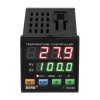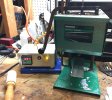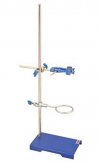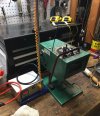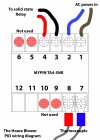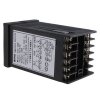Hi,
Yes, there is actually a nice sheet that comes with the controller and admittedly...
The set up for straight heat control (no Alarms) is the easiest set up, but..
If you are not used to electric schematics, can get "lost in the sauce", and...
I only want to do this once, so first hand knowledge, confirmed is the way to go.
I'm sure, I have it figured out, just thought someone with that controller could confirm my schematic I posted?
I understand, believe me.
I snagged this from Amazon. It LOOKS like your model, but typically, model numbers are configured to indicate all the features and options supplied on YOUR controller. What you are seeking SHOULD be the same on every model. Looking at the diagram on the controller case, it looks like you are OK.
If your temp is wonky after hooking it all up, try reversing the TC leads. Same for the SSR. Incoming power should not matter, as it's AC and the polarity changed every .016 seconds anyway - and is not specified as "hot/N" anyway.
Your TC will have different colored leads. I'm using J-type, so WHT is POS, RED is NEG
Thermocouple Wire Color codes for identification of thermocouple wires and types of thermocouple.
www.tc-inc.com
I guess out of habit, I search out industrial TCs, so I get "flying leads" (just wires) hanging out the end of the sheath - easy to ID colors. Then, I add my own connectors. As you get used to using this thing, you'll use it more and probably explore other features. Pick a plug/receptacle and get some extras and you can wire up spares or have one on each thing you control. Sounds like that's your plan anyway.
The attached is an example and may not be identical to yours, but the connections you are using are pretty universal. Just always douible-check your wiring before applying power. My dad was a tool & Die maker for forty years. He always said "it's all in the setup," meaning that it might take until lunch to get everything perfectly arranged to make a five-minute "cut" after lunch. I try to take the same approach with electrical. My line is "If you want to get done on time, you'd better slow down."
You will eventually become more comfortable with the wiring and configuration. If you get lost in the menu, you can usually hit "escape" (or whatever they call it on yours) several times and find your way out to the operator display. If you think you've mucked up the configuration, and can't figure out what it is you did wrong, you should be able to do a factory reset and start over. Trust me, as horrible as that sounds, it's usually faster, and definitely less painful that way.
